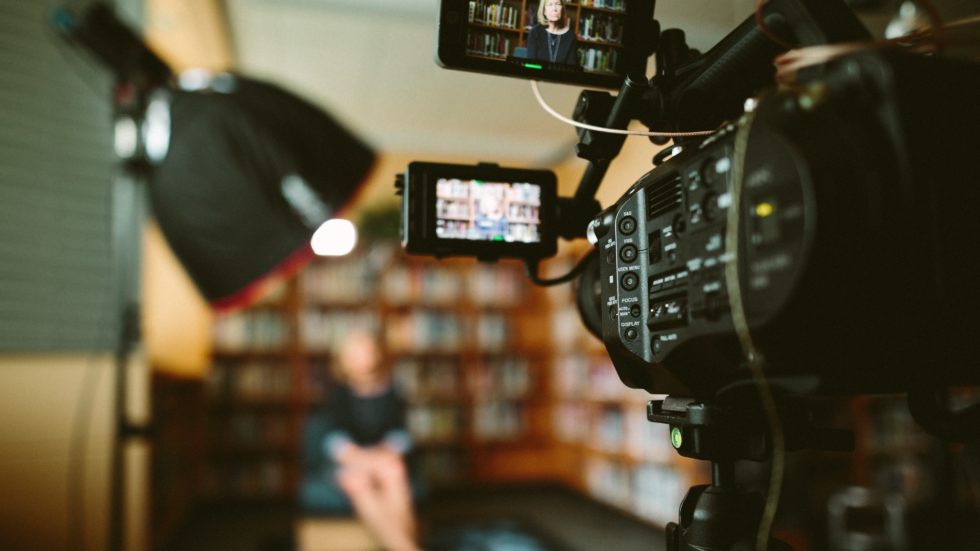Covid and social distancing necessitate virtual and remote.
Virtual and remote necessitate video and digital content.
Videos keep customers connected to you during COVID, but while 2020 has (thankfully) come to a close, virtual and remote along with video and digital will be with us for a long time to come thanks to new models of doing. Social distancing has inspired creative thinking and ushered in a mandate: Video and digital are must-have tools!
Ideally those tools are in the hands of those who can create, shoot, and edit compelling stories, impactful messages, and engaging content. But whether your team is new to crafting visual content or peppered with seasoned pros, what follows is an indispensable checklist for shooting interviews at peak efficiency and producing pre-recorded segments and virtual presentations that maximize results while minimizing difficulty and cost.
– Have a clear story in mind or make sure to find the story as you go.
You may know exactly who and what you are shooting; you may not. Either way stay ever mindful of the story you are telling, and then be sure to ask questions that will help tell it well.
– Be willing to abandon your scripted questions.
Sometimes glorious, but unexpected, things unfold organically. That’s a gift, so take it. Ditch the script, and follow the story. Being prepared is great; being rigid is not.
– When crafting a short piece, drill down into no more than one or two specific topics.
Going a mile wide and an inch deep yields too much (disjointed) footage to sort through and too little story to latch onto. Better to stay micro focused than to cover a broad spectrum.
– Make sure your interview subjects have nothing in their hands.
Handheld objects can be distracting, and editing around their placement in the shot is a bear!
– Speaking of editing, always shoot for the edit.
If you can’t see how things will knit together or where it’s all going, stop! Envision the story pictorially and then focus (pun intended) on capturing the elements and transitions you need.
– When interviewing less seasoned on-camera subjects, set them up for success.
Begin with shorter, simpler questions they can answer with confidence. And allow them to talk to someone placed right next to the camera, rather than having them speak right into the lens.
– When given the luxury of pre-recording, ask your questions twice.
First takes are rarely best, plus Take 2 will give you cutaways for unexpected “uhms,” stumbles, and stammers. Bonus Tip: Frame the two takes differently to make editing easier, and of course remember not to respond verbally while listening, so all your audio remains clean and usable.
– Speaking of clean audio, check the audio and then check it again!
Make sure someone is paying very close attention during recording to bumps, background noise, mispronunciations and more. Once you wrap, you are stuck with the audio you’ve got.
– Capture straight room tone.
Call “Quiet!” on the set and then run audio for 30 seconds. You can only cut extraneous noise if you have something with the same ambient tone to replace it with.
– Capture footage of your subjects sitting quiet and still — and lock the shot!
Sometimes you don’t see things until you get into the editing room. A neutral cutaway of a subject can provide the B-roll you need to cover a multitude of sins.
If ever there was a time to find new ways to do what you’ve been doing the same way for years, that time is now. Yes, we are all hankering for more “in-person,” but we’ve learned that remote can add value too, so go out there and shoot like a pro. And if you need help doing that, just give me a holler.
